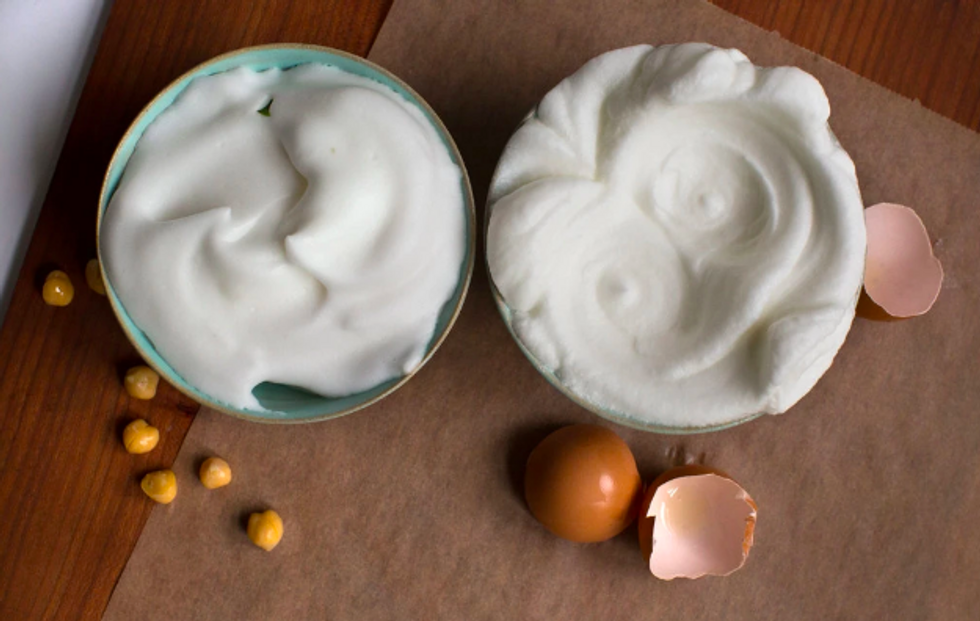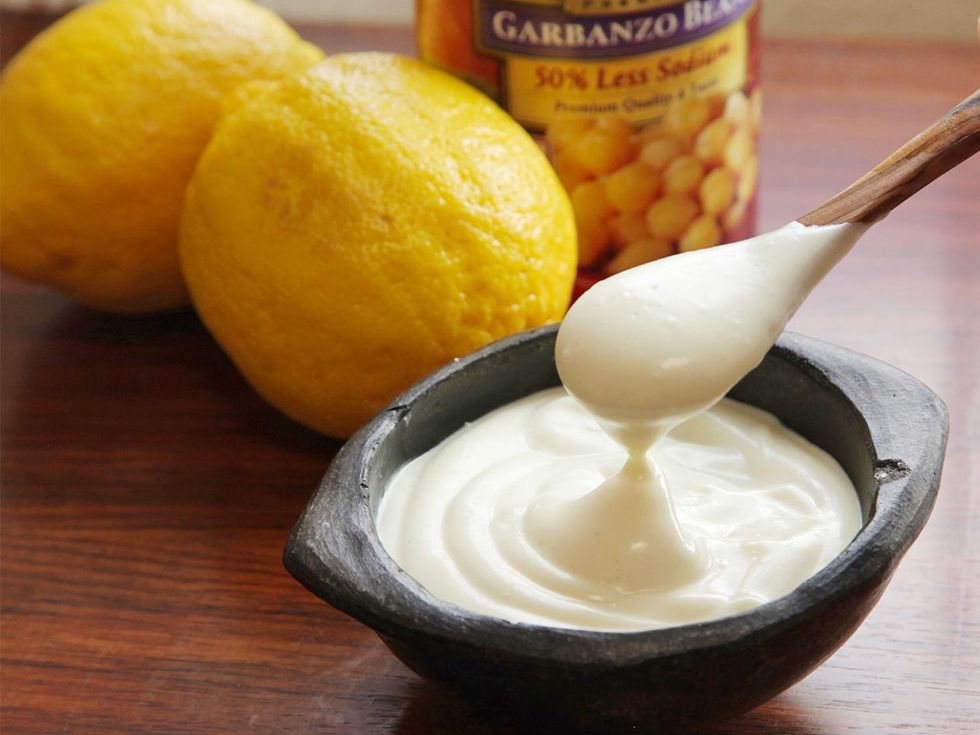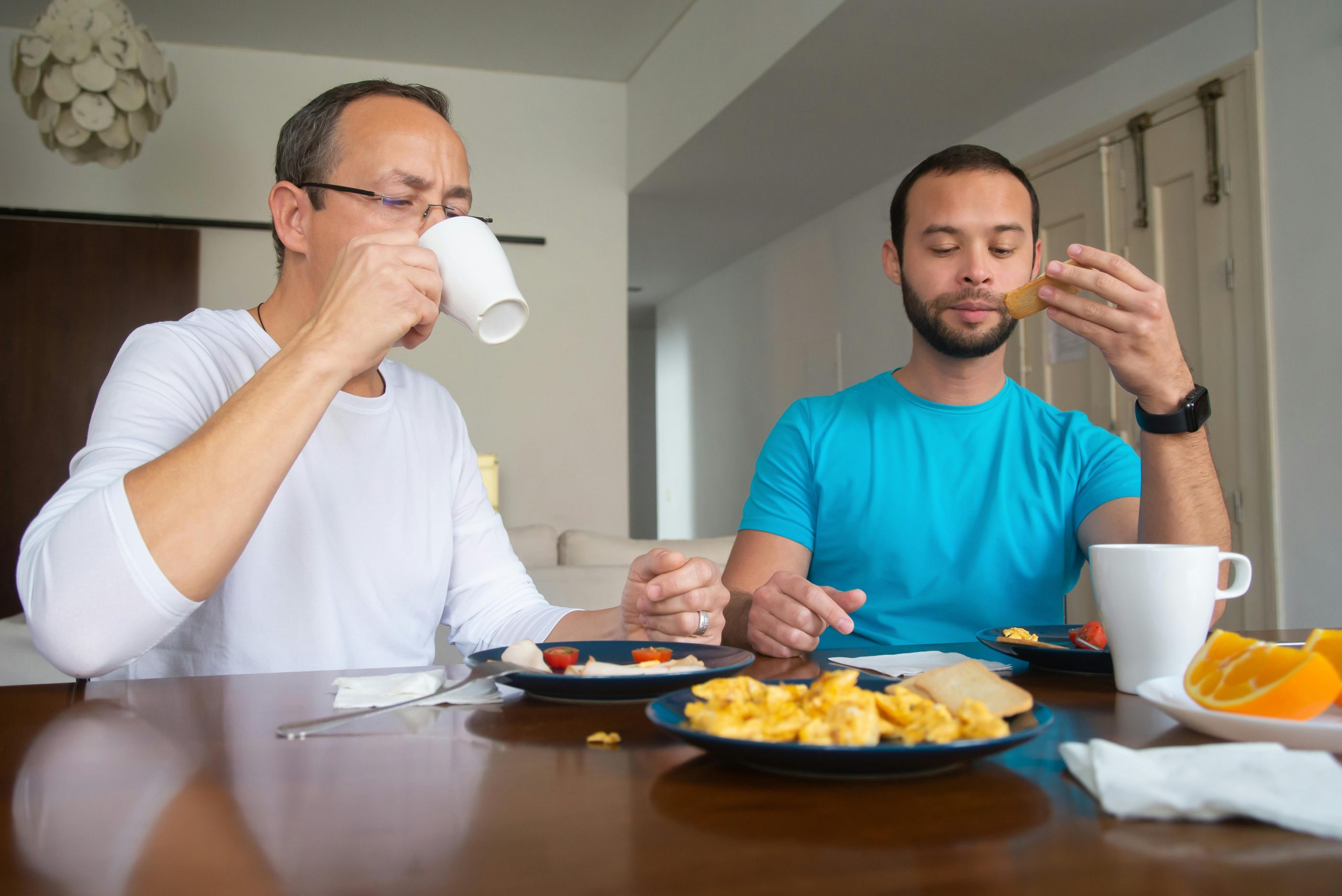Aquafaba has been called many things. The trendiest health food. The most magical egg replacement. A vegan miracle. But what is it really and why should you care? It’s the chickpea byproduct. Yes, bean water. Amazingly, this canned bean juice can be transformed into everything from vegan whipped cream, mayo, meringues, mousse, macarons, and more. The vegan baking options are endless, but you can also use this egg replacement for cocktails that call for egg whites like a pisco sour or ramos gin fizz.
At best, chickpea water sounds bland. At worst, it sounds totally gross. Either way, we’ve been pouring it down the drain for years, but the time has come to give it a second look. The potential for Aquafaba has been hiding in your kitchen cabinets for years. It’s essentially free and there are tons of uses to explore.
Chickpea water was first whipped into a stiff white foam by Goose Wohlt. He’s an Indiana-based software engineer and newbie vegan who was looking for a way to make vegan meringues for his family sedar. His wife saw a youtube video of two French chefs using chickpea water to make vegan chocolate mousse and he decided to give it a try. It worked. The simple bean water transformed into a stiff glossy foam. His easy recipe went viral after he posted it to a Facebook page called, “What Fat Vegans Eat.”
How exactly does chickpea water transform into a vegan egg replacement?
It isn’t exactly clear how it works so well but according to The New York Times it has something to do with chemicals called saponins. Saponins are known to stabilize bubbles like an emulsifier. That goopy chickpea water is full of saponins making it capable of acting like a binder the way that eggs do. Three tablespoons of aquafaba is about the same as one whole egg and two tablespoons is equivalent to one egg white. Use it in vegan quiches, cakes, biscuits, cookies, and sauces.
How do you whip up this tasty vegan egg replacement?

Here’s the super simple, original recipe for vegan meringues from Goose Wohlt:
Ingredients:
- The liquid from 1, 15 oz can of chickpeas
- ½ cup of granulated sugar
Directions:
- Using an electric mixer, whip the chickpea liquid until it forms firm peaks and slowly pour in the sugar while whipping it at high speed.
- Once it’s firm enough turn the bowl upside down without losing any, take the fluff, try not to eat it all first, and put -2inch/3cm dollops on parchment paper.
- Bake at 200 F for 1.5 hours.
- Take them out and let them cool.
- You can add a touch of vanilla.
- *for stiffer meringues you can as much as 4x as much sugar. You can also try using cream of tartar or vinegar to get even stiffer peaks.
Interested in other Aquafaba uses?

Here’s an easy aquafaba mayo recipe from Serious Eats. Remember you can also use the whipped aquafaba from the recipe above as a vegan egg replacement. Just follow the ratio of 3 tablespoons of aquafaba for 1 whole egg and 2 tablespoons for 1 egg white.
Aquafaba Mayo by Serious Eats
Ingredients:
- 2 medium cloves of garlic, minced
- 1 tablespoon of fresh lemon juice
- 2 tablespoons of Dijon mustard
- 3 tablespoons of liquid from a can of chickpeas, plus 12 whole chickpeas
- ½ cup of vegetable oil
- ¼ cup of extra virgin olive oil
- Kosher salt and black pepper
Directions:
- Combine garlic, lemon juice, mustard, chickpea liquid, and chickpeas in a container large enough to fit the head of an immersion blender.
- Blend at high speed until smooth.
- With the blender running, slowly drizzle in the vegetable oil. A smooth, creamy emulsion will form.
- Whisking constantly, slowly drizzle in the olive oil.
- Season to taste with salt and pepper.
- The mayo will keep in a covered container in the fridge for up to 1 week.










